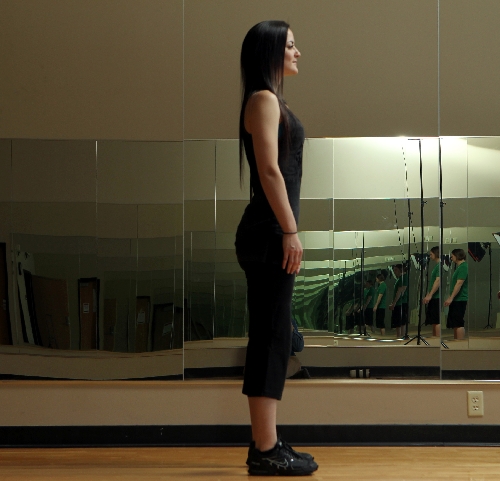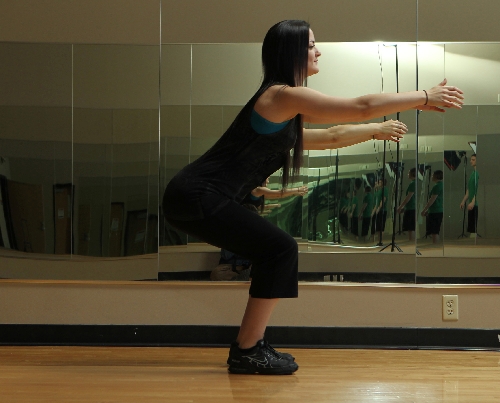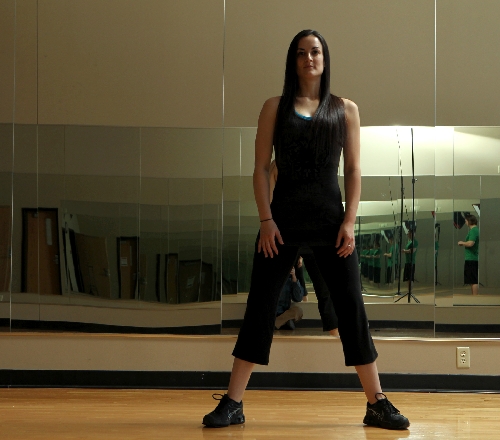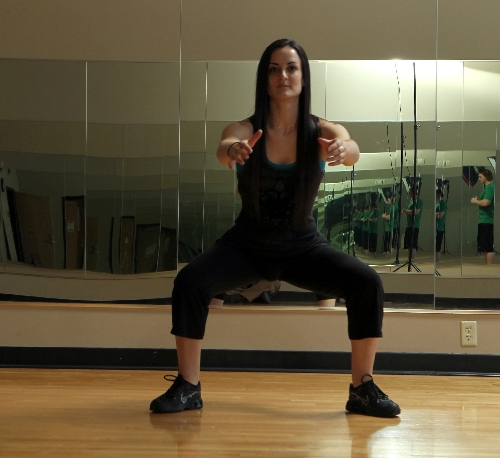Doing squats the right way will help all your exercises




Rolled eyes and a sigh are often the response when I tell clients that we’re doing squats. They can be difficult and take lots of energy. I’m also a stickler for form, which means I’m constantly telling them to straighten a foot or watch the knees and back.
Why bother doing squats if they are so hard and you have to watch your form so closely? The answer is to practice the basics. Being able to do squats proficiently will aid you in the rest of your exercises.
Being able to bend the knee without having the toes move out on their own will help you do lunges better. Being able to squat without your heels coming off the floor by themselves will help your body recruit the hamstrings and glutes. Otherwise, the quads do most of the lifting and there is unnecessary strain on the knee. Keeping the back straight while doing squats helps your posture by conditioning your body to habitually stand upright and not hunched over.
Squats are a natural movement. Think about the last time you put on pants. You were probably balancing on one leg, slightly bent, while the other was finding its way into a pant leg. Then you did the same for the other leg. You then performed a squat as you brought the pants up to your waist.
Squats are also a great exercise for conditioning the lower body. The traditional squat works the glutes, hamstrings and quads. Even the calves help out by giving stabilization to the legs throughout the movement. Many machines have different handgrips or foot placement options to allow for variations in training. There are also different variations of the traditional squat. These variations allow you to emphasize certain muscle groups over others.
The two exercises I detail in today’s column require no equipment. You could even do them at home. In addition to the standard squat, I’ll give you the movements for the power squat. This squat works the inner thigh more than the traditional squat. It also targets the quadriceps, glutes and hamstrings. Many women use it to help develop shapely legs and hips. Heavy lifters use it because it allows the inner thigh to assist in the lift.
One of my favorite variations to squats is to alter the tempo. By doing them slowly and with a higher repetition range, you increase blood flow to the tendons, thereby strengthening them. Doing squats fast with an explosive movement will help develop power in your legs and will get your heart pumping. From there you can progress the explosive squat into a jump (maintaining correct form, of course), further conditioning the cardiorespiratory system.
Another variation is to add weights. Some people hold dumbbells in their hands and others use a loaded barbell placed across the back of the shoulders. Make sure you have the form down before you progress to the weights. Then be sure the form is good at one weight before you graduate to a heavier weight. It is OK to practice tempo variations when you are using weights. It will help make your strength well rounded and versatile.
Reader feedback: In response to my Nov. 28 triceps column, I’ve received a few new names from readers for "batwings," those flaps of skin that hang down from some people’s upper arms. I thought I’d share them with you: bingo wings, Ethel Merman arms, hi Janes, water wings, and my new favorite, flesh flags. Thanks to everyone for their comments.
Chris Huth is a Las Vegas trainer. You can contact him at 702trainer@gmail.com. Before beginning any exercise program, consult your physician.
Photos for this column were taken at UNLV’s Student Recreation and Wellness Center. Although the facility’s primary clientele is students, faculty and staff, the center also welcomes community members 18 and older at a monthly fee of $25. You can contact the service desk at 774-7100 or by email at srwc.memberships@unlv.edu.











